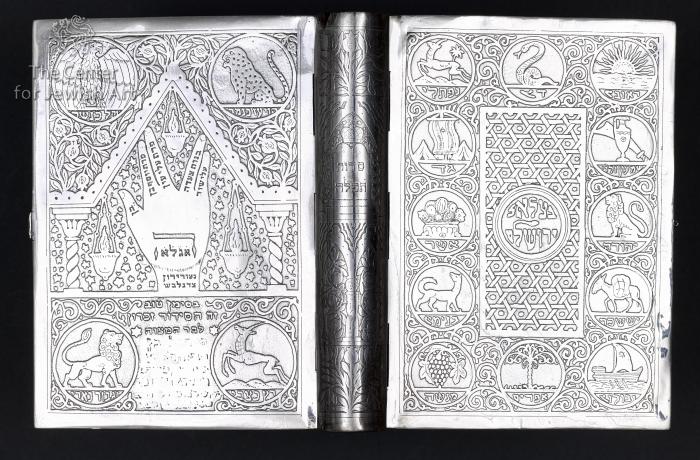Obj. ID: 36441 Book binding, Jerusalem, 1936

sub-set tree:
The following description was prepared by William Gross:
The bindings of Jewish books are generally quite simple, but there does exist a tradition, probably among the wealthier section of the population, of binding books in special and elegant ways utilizing a variety of material.
Silver book bindings are one of the most elegant objects of Jewish ritual art. The form is generally copied from Catholic and Orthodox Christian tradition where prayer books were often covered with silver bindings in keeping with the other elegant silver pieces used in the prayer service. As in many other areas of life, Jews emulated some customs from what they saw of their Christian neighbors. Since such a binding was an expensive purchase for an individual, such silver pieces are fairly rare. Their appearance is most widespread in Italy, but examples also exist from Germany, Poland, Ukraine, Austria, and even the Ottoman Empire.
A beautifully acid-etched silver binding to a siddur published in Baghdad in 1936. This appears to have been a specially-ordered object from the Bezalel School and is magnificently designed and carried out. It is the only such silver binding recorded with Kabbalistic characteristics and names. There was a blank piece of silver covering the bottom inscription, which indicates that this was a gift for a Bar Mitzvah.






